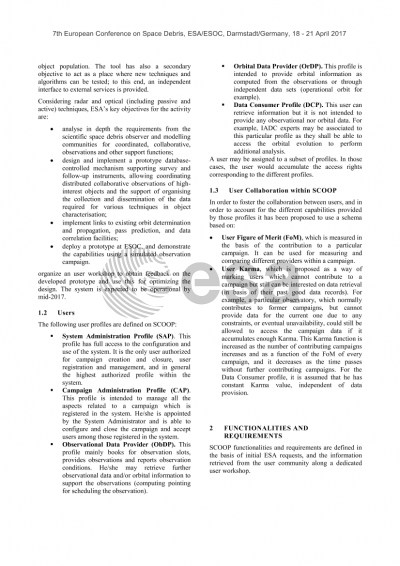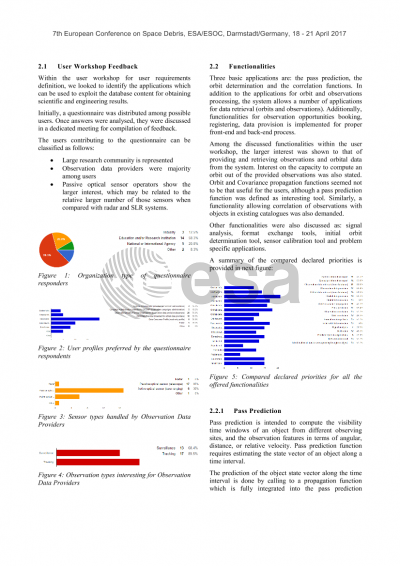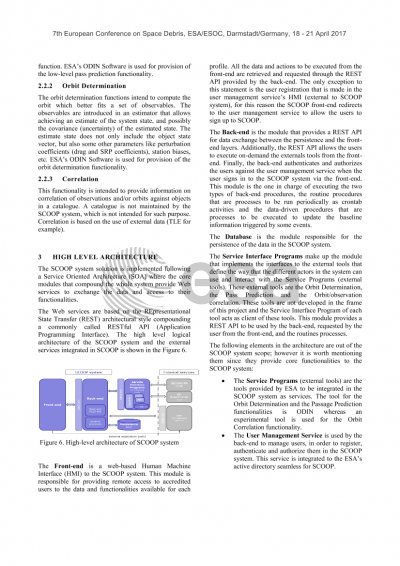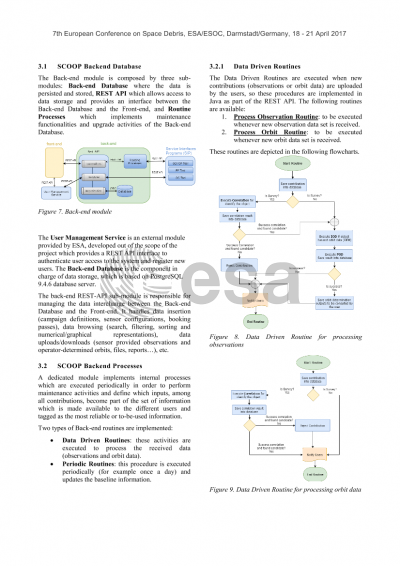Document details

Abstract
This paper describes the Space COllaborative Observation Platform (SCOOP). The SCOOP tool is intended to facilitate the organisation of collaborative coordinated space object observation campaigns among ESA and/or IADC but also loosely connected sensor operators, in order to allow the observation of interesting events related to the space debris population. The system provides a complete back-end process providing all the capabilities required along an observation campaign to compute the derived orbit and correlate observations with orbital data from existing catalogues. The tool has also a secondary objective to act as a place where new techniques and algorithms can be tested; to this end, an interface to external services is also provided. The system allows defining survey and tracking campaigns, which can be executed in a parallel approach.
The functionalities provided by the system include the capability to generate pass predictions of the objects to be observed (in case of tracking campaigns) for the contributing sensors, share the observations provided by the contributors, execute orbit determination for the observed objects, provision of accurate orbits (if available), allow correlating observations against the existing objects catalogue. In addition, the tool allows providing performance reports for each contributing sensor, and per observation campaign.
The system has been designed to make use of existing underlying functionalities. For the pass prediction and orbit determination functionality, ESA’s ODIN tool is used. ODIN is normally used by ESOC for operational orbit determination when re-entry, conjunction and other events are analysed through observations from ground-based sensors. For the correlation activities, a correlation prototype tool used in the Space Debris Officeis integrated. It allows tracing the provided observations against the TLE catalogue.
Different user roles are available within the system, one focused on administration activities, and another one for nominal use. Among this latter type, the users are differentiated in Observational Data Provider (ObDP), Orbital Data Provider (OrDP) and Data Consumer Profile (DC), allowing to meet the needs of a wide variety of users.
SCOOP is a system which has been designed and developed by DEIMOS, in collaboration with TUBS, for ESA/ESOC, under contract 4000115836/15/D/SR.
Preview










